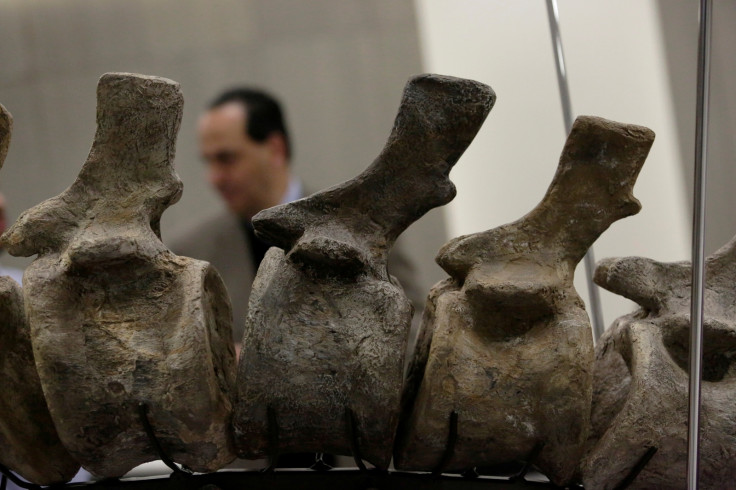First near-complete dinosaur skull found in Australia reveals links between continents
Sauropods were plant-eating giants and were among the largest animals to have ever lived on Earth.

A nearly complete skull of a 95-million-year-old sauropod dinosaur that was found in western Queensland, Australia, has been able to give more information about the earth's geological history.
The dinosaur named Ann was found in 2018 on Elderslie Station near Winton. The researchers from Curtin University have since been analysing the skull to get a better understanding of its anatomy and feeding habits.
The findings have now been published in the journal Royal Society Open Science. It belonged to the species Diamantinasaurus matildae and roamed the planet between 100 and 95 million years ago. The species is known for having small heads, long necks, and tails.
"This skull gives us a rare glimpse into the anatomy of this enormous sauropod that lived in north-east Australia almost 100 million years ago," said Stephen Poropat, lead researcher from Curtin University's School of Earth and Planetary Sciences, per The Guardian.
The researchers added that Ann's skull and the skull of a titanosaur called Sarmientosaurus musacchioi had several similarities, such as the shape of the teeth and the braincase. The study added that it likely measured 15 to 16 metres long from head to tail.
"It would be able to peer into a two- or three-storey building; it was about as heavy as four average African elephants and about as long as a tennis court," Dr. Poropat said.
The dinosaur was an herbivore, and "being pursued by a sauropod would've been like being pursued by a turtle," it added. "They were not fast moving. They were not terribly brainy, and if you look at their teeth, they're not adapted for eating prey at all."
The study further stated that the skull has similarities to fossils found in South America at around the same time, which implies that the dinosaur probably travelled between South America and Australia through Antarctica.
"The window between 100 and 95 million years ago was one of the warmest in earth's geologically recent history, meaning that Antarctica, which was more or less where it is now, had no ice," added Dr Poropat.
"Similarly, Australia, which was much further south than today, was warmer with less seasonality. In that climate, Antarctica was forested and might have been an attractive habitat or pathway for wandering sauropods."
A nearly complete #sauropod skull discovered in rural Queensland has helped researchers to gain a better understanding of the animal’s anatomy, relationships to other sauropods, and feeding habits! Hear about @CurtinUni’s Dr Steven Poropat’s findings at: https://t.co/aXl3kmkcRJ🦕 pic.twitter.com/nekNjRGmGu
— Curtin Media (@CurtinMedia) April 12, 2023
It is the third such specimen of Diamantinasaurus matildae that has been found on Elderslie. The first juvenile sauropod was discovered in Australia in 2012. The study says sauropods were plant-eating giants and were among the largest animals to have ever lived on Earth.
Relative to the size of their bodies, they had small heads and thick legs. The species includes such animals as the Diplodocus, Brachiosaurus, Brontosaurus, and Apatosaurus.
Scientists believe that sauropod dinosaurs could potentially have played a significant role in influencing climate through their methane emissions. In 2012, an international team of scientists discovered that giant flatulent dinosaurs such as Sauropods are one of the main culprits behind global warming.
The discovery was made while the researchers were analysing some data from the Late Jurassic Morrison Formation in the USA.
Initially, the scientists had analysed the exact methane production in the Mesozoic era using a new technique. The researchers studied the methane output data from modern herbivores such as cows.
An analysis of the amount of methane and the bodyweight of the cow with that of a group of flatulent Sauropods revealed that the dinosaurs could produce approximately 520 million tonnes of methane gas annually.
Methane is one of the gases that cause the greenhouse effect. It increases the temperature of the earth's atmosphere because greenhouse gases absorb and emit radiation within the thermal range, and this harmful radiation leads to global warming.
© Copyright IBTimes 2025. All rights reserved.






















